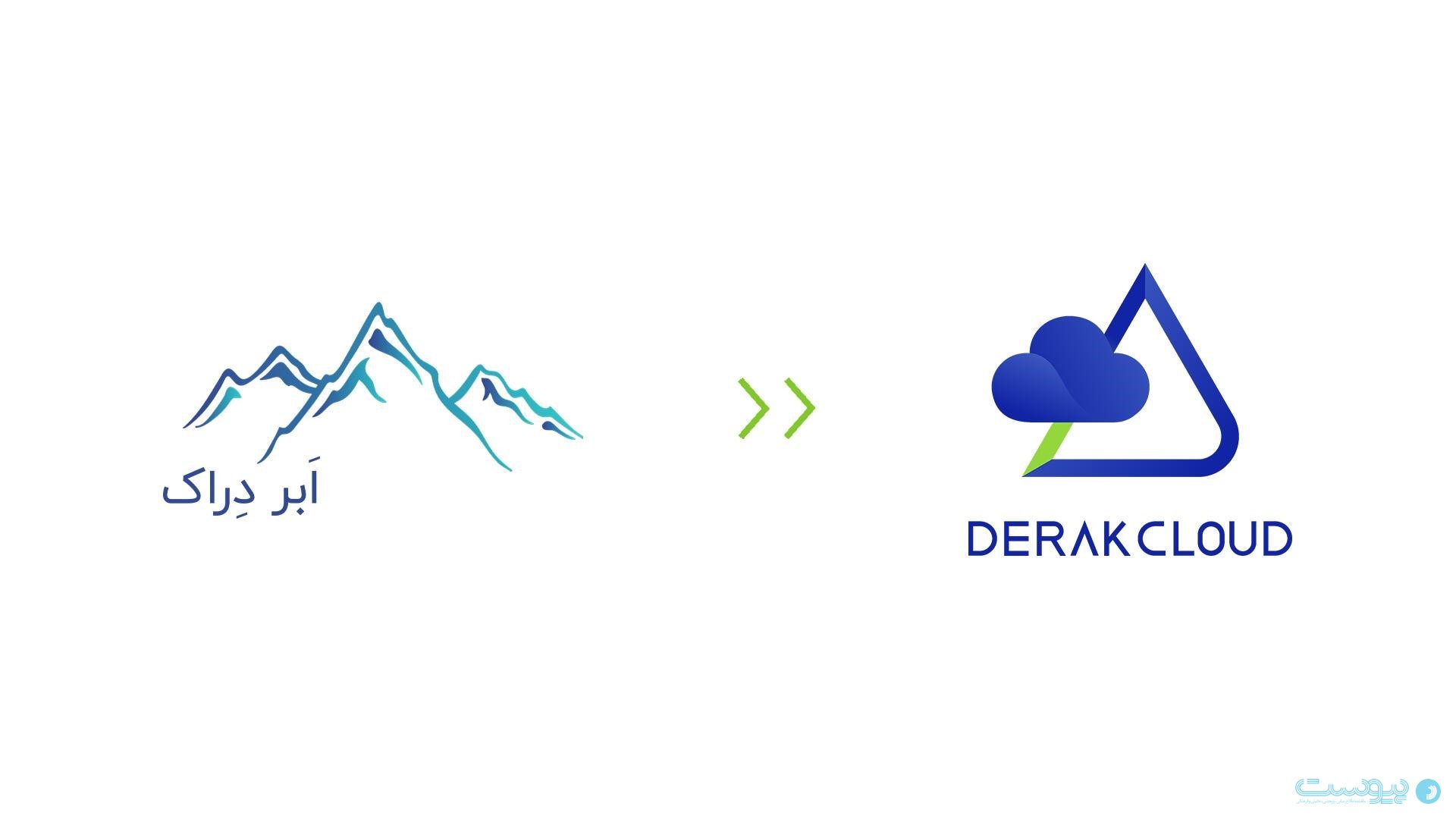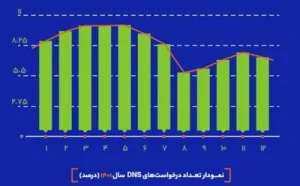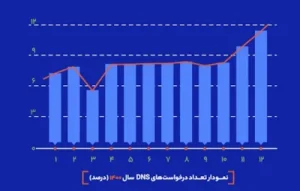The Derak Cloud Report on the penetration of web hosting companies and data centers shows that in the year 1401 (2022-2023), the share of domestic Internet service providers decreased.
Derak Cloud Report indicates a shift in user behavior and the impact of disruptions and constraints on internet usage.
According to IDEA, charts depicting the usage of website services from domestic and foreign hosting companies, data centers, and co-location services show that in 1399 (2020-2021), domestic internet service providers had a 41.7% share, while foreign service providers held a 58.3% share. In 1400 (2021-2022), the share of domestic service providers increased by one percent. However, in 1401 (2022-2023), foreign service providers experienced growth, increasing from 57.3% to 68.9%, meaning the share of domestic service providers decreased by approximately 10%.
This is in contrast to Derak Cloud’s 1399 (2020-2021) report, which concluded based on data that website administrators preferred using domestic hosting services.
Cloud DNS Service Requests
Internet disruptions and filtering in the latter half of the past year had an impact on the number of cloud DNS service requests to Derak Cloud, resulting in a significant decrease in the second half of 1401 (2022-2023), unlike previous years.
In previous years, as the end of the year approached and online purchases increased in number, the number of Derak Cloud service requests saw a significant rise. However, the 1401 (2022-2023) chart shows that while requests increased towards the end of 1401 (2022-2023), they did not reach levels close to the number of DNS requests during a similar period in 1400 (2021-2022).
A Decrease in Iranian Users’ Utilization of Iranian Public DNS Servers
In 1401 (2022-2023), users’ dissatisfaction with Iranian Public DNS servers was notable. Cloud Dragon, based on a comparative analysis of edge server logs and its own DNS, concluded that out of every 10 Iranian users, 9 were using non-Iranian DNS servers. The global average for this figure is 4 out of every 10 users.
Derak Cloud explained that this indicates Iranian users’ dissatisfaction and a reduction in their use of Iranian Public DNS servers compared to 1400 (2021-2022). According to this chart, approximately 30% of users utilize Google’s DNS servers, 17.17% use Cloudflare, and 12.9% use Amazon’s DNS servers.
Derak Cloud Network’s Interchange Traffic
Derak Cloud Network’s interchange traffic experienced a significant decline during the third quarter of the past year, coinciding with the start of filtering and disruptions, compared to the averages of previous years.
The trend of interchange traffic (data sent and received within Derak Cloud Network) progressed naturally in the first half of the year and could have continued its growth pattern in the second half of the year, based on the 1400 (2021-2022) pattern. However, in the month of Shahrivar (August-September), there was a sharp decline in data transmission and reception within the Derak Cloud Network, which persisted until Aban (October-November). In the fourth quarter, there was an increase in traffic due to users’ increased utilization of CDN services.
Status of Popular Platform Connectivity
Derak Cloud has been monitoring the status of connectivity and stability of popular and highly visited platforms from their origin, i.e., their POP sites, through three international internet gateways to external references. This monitoring allows them to provide reports on the uptime status, including connections, disruptions, and internet outages.
According to the data, during the first six months of the past year, Instagram, WhatsApp, Google, and Cloudflare had an uptime rate of over 99%. Instagram experienced 10 hours and 53 minutes of downtime during this period, WhatsApp had 9 hours and 45 minutes, Google had 42 minutes, and Cloudflare had 34 minutes of downtime.
However, in the second half of the year, the situation was different. With the filtering of Instagram and WhatsApp, Instagram’s downtime reached 179 days and 21 hours, while WhatsApp had 179 days and 22 hours of downtime. During this time, Google also experienced 2 hours and 10 minutes of downtime.
Derak Cloud explained that Cloudflare’s IP addresses experienced widespread outages in the second half of 1401 (2022-2023), which occurred sporadically on random IP addresses during different time intervals. As a result, the data processing team was unable to measure it accurately. Cloudflare statistics were extracted from monitoring the status of some of Cloudflare’s services, such as their website and user panel, which showed 1 hour and 28 minutes of downtime.
Increased DDoS Attacks Mitigated by Derak Cloud CDN
DDoS attacks increased significantly, especially in the second half of the past year. The largest attack on Cloud Dragon’s cloud service occurred on the 15th and 16th of Bahman (January-February) with a traffic rate of 450 gigabits per second, lasting for 36 hours, extensively targeting Cloud Dragon’s CDN service and network. Derak Cloud reported that this attack was successfully mitigated, and none of the recipient websites were taken offline.
Doubling of Bots
Cloud Dragon’s data processing indicates that around 56% of users access the internet from mobile devices, while approximately 28% use personal computers. About 16% of users are bots, which has more than doubled compared to the previous year.
Among operating systems, mobile software, including Android and iOS, has the highest share. Windows accounts for 27%, and Linux for 6%, with the share of Linux doubling compared to 1400 (2021-2022).
The most popular web browser for Iranian users remains Chrome, with a share of nearly 40%. Safari comes next with 11.11%, Samsung with 8.85%, Google with 7.72%, and Firefox with 6.67%.
Irancell is the Most Utilized Internet Service Provider
Cloud Dragon’s data shows that mobile operators have been the most accessible way to access the internet. In 1401 (2022-2023), Irancell was the most utilized internet service provider, followed by Hamrah-e-Avval (MTN Irancell). This is a shift from 1400 (2021-2022) when Hamrah-e-Avval held the top rank. Users of both operators increased in the past year.
Iran Telecommunication Company was the third-largest internet service provider, with 8.85% of users utilizing its services. “Other companies” ranked fourth, while AsiaTech, like the previous year, held the fifth position. Shatel managed to move ahead of AsiaTech with a slight increase, while Communication Infrastructure Company remained steady with a one percent decrease. Following them were MobinNet and Rightel.”
Overall, mobile internet had a 72.44% share of user usage, fixed internet had a 20.81% share, and other companies accounted for 6.75% of the share.
The limitations on the internet during peak usage times also changed user behavior. In Mehr and Aban 1401 (September and November 2022), more users were active on the internet between 6 AM to 12 PM. During these months, severe disruptions and, in some cases, international internet outages were observed in the afternoon.
Furthermore, in 1400 (2021), the peak usage time for users accessing websites hosted on the CDN of Derak Cloud was 24:00 (12 AM), which changed to 22:00 (10 PM) in 1401 (2022).
The instability of the internet and issues with cloud service provision
In addition to the annual report, Derak Cloud published a report on the state of the internet during disruptions and filtering. This year’s report also contains data showing the unstable state of the domestic internet and fundamental changes in how users utilize cloud services. Derak Cloud emphasized that these factors, in various dimensions, caused problems in providing satisfactory services and ultimately led to changes in infrastructure planning and cloud products. Analyzing this data reveals the damages caused by limitations and disruptions to cloud services.
Derak Cloud connects to the internet in 9 countries, including 4 cities in Iran and 10 cities outside Iran, with a total capacity of 2 Terabits per second in various data centers. In 1401 (2022), it collected and analyzed a total of 68 billion logs from its various service levels.
Ninety-two percent of users of this cloud service in Iran and abroad use Persian-language websites and services, providing a good opportunity to analyze and visualize the behavior of Iranian users on an annual basis. According to the Derak Cloud annual report, the total number of unique Iranian IPs registered in 1401 was 13 million, 75% of which passed through Derak Cloud’s edge server infrastructure. This means that out of every 4 users with Iranian IP addresses, at least one has used Derak Cloud’s infrastructure directly or indirectly to access the recipient’s websites.
Derak Cloud’s opposites are distributed in Tehran, Tabriz, Shiraz, Bandar Abbas, the United States, the Netherlands, Germany, Singapore, France, Canada, Mexico, and Australia.








No Comment! Be the first one.